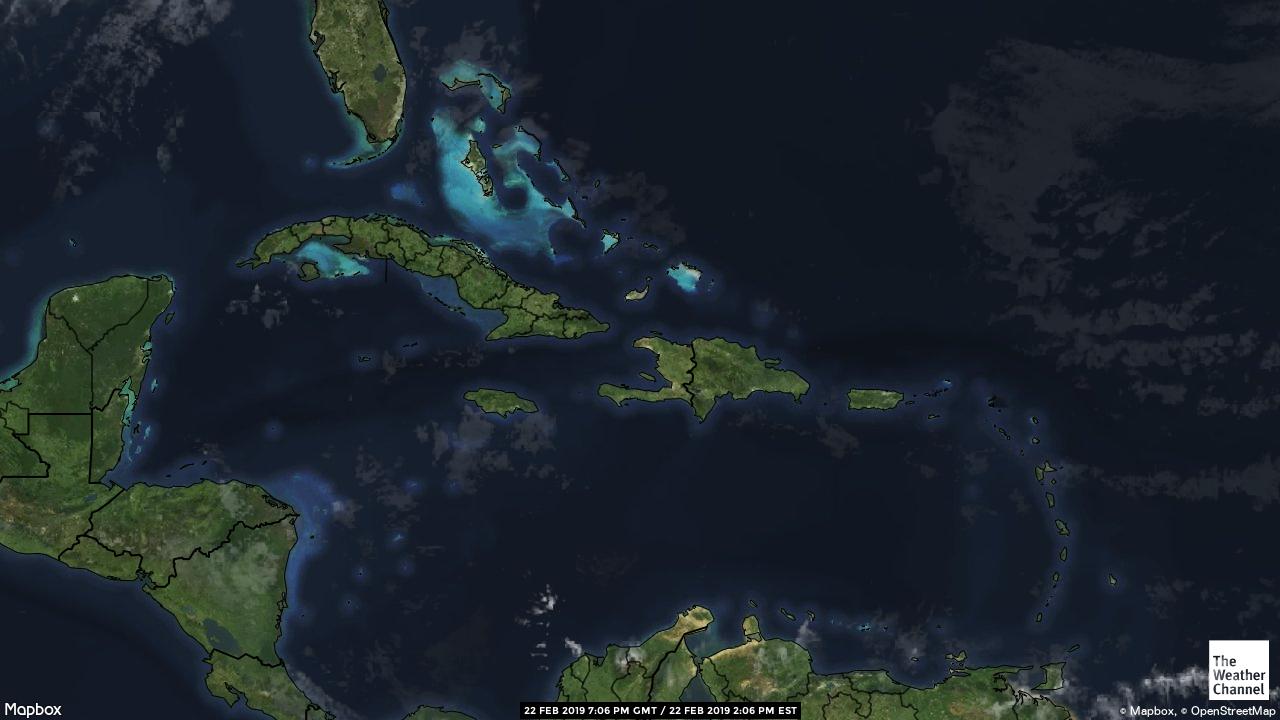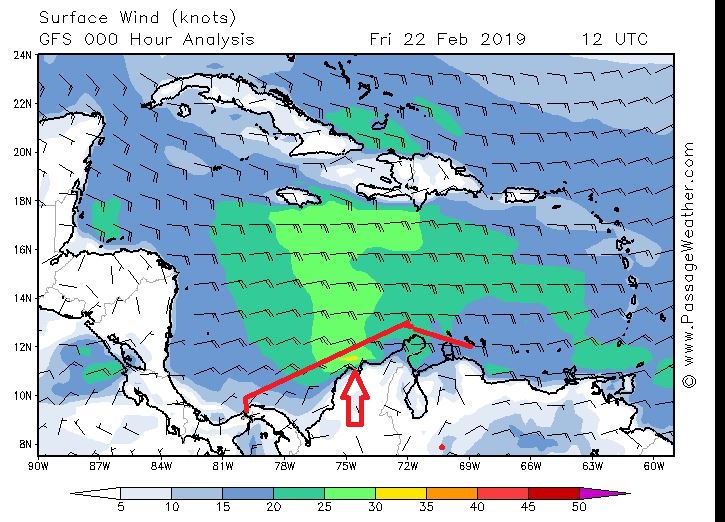As described yesterday, we applied the “blow away maneuver” and the wind did not disappoint us. Within no time we were far enough away from the dock to swing around and to head to the North West. Our route in this situation is a bit peculiar as we go from Aruba to the East, to visit Curacao and then from Curacao to the West, passing by Aruba again. It would make more sense to call at Curacao first and then sail to Aruba, as from Aruba we go further west to Panama. It would save about 200 miles in fuel. Or about 70 fuel tons * $ 420 = $ 29,400 which none of us likes to spend.
But there is a reason for it. When they figure out the schedule for the cruises, HAL competes against the other companies who also want to have a dock in all the ports. The pecking order goes as follows: biggest ship first, ship calling most frequently first, if a ship takes bunkers in a port and is calling frequently, goes first. Thus the ship that is less frequent and smaller has to pick a date when the others are not there. The ZUDM frequency is every 10 or 11 days. So it has to compete against ships which call every 7 days and ships which are much bigger. Aruba and Curacao are not ports where there is a tender option, too much swell generated by the Trade Winds. And thus our cruise planning department has to start puzzling. This department is led by one of our old captains, Capt. Simon Douwes who then tries to figure out what works best. Having his captain’s experience is a great asset so the ships will not end up in situations which are lovely for marketing but do not work in real life. On average it works out quite nicely to do it this way and thus the cruise is setup accordingly by doing Aruba first on the 10 & 11 day cycle. It could always be possible that for one cruise we have to flip the ports around because of congestion but that does not really affect the cruise experience.

The sky looks clear but we still have a lot of thin clouds above us and above Colombia it is quite thick as shown by the white “plumes” there. (Courtesy: The Weather Channel)
Now we are on the “rocking and rolling” section of our cruise, sailing along the coast of Venezuela and above Columbia and then later down to Panama. As soon as we changed course to the west in the early morning hours, the swell got a grip on the ship and we started to move slowly. A little bit rolling and little lifting of the ship (a sort of pitching movement but not enough to call it pitching) and the corkscrew motion appeared. All normal and the guests knew where the railings were to hold onto if needed. What was not in the planning was a frontal system now lying over this area. And we are right in between a high pressure system to the North and a low pressure system to the South. Wind blows from high pressure areas to low pressure areas and thus it blows over us. Wind whips up the waves and that means more movement. Enough to have the Captain make a special announcement to advise that the ship might intensify the motion we already had. Thus far it has not much impacted life on board. The Lido was full for lunch time, and those who were not there, were in the Mariners luncheon.

The wind chart for today. Note the little yellow patch where the arrow is. If there is wind, we always catch it there. I think it has something to do with the indentation in the coast line. (Courtesy: www.PassageWeather.com)
Tonight we will turn to a south west heading for Panama and if the extra wind remains due east we will be run out of it and things will quiet down. We are heading for a 05.15 pilot station at Cristobal at the entrance of the Panama Canal. The ship will sail into the breakwater by itself and then stop just inside to await a whole Parade of very important people. And they all come with their own boat as they are all very important.
- The agent who clears the ship, who normally also brings the Commentator with him.
- The Canal technician, who inspects the bridge to see if everything works. (Including the window wipers)
- The Fumigator to see if we do not have any creepy crawlies on board. We do not have them, and if we have them it is because they flew on board while in Panama. But he knows the difference.
- The Pilots.
- The Tender expert. This person inspects the tenders to see if they are licensed before we can start our tender operations in Gatun Lake.
- Coming closer to the locks, the Panama Canal crew.
What is also very important (at least for the Panama Canal Authority =PCA) is that we pay for the canal. So the captain has to get his Platinum Card out (*) and sign off for $ 344,740.
(*) Not really anymore. But there was a period in the 80’s/90’s were the PCA first checked with the bank before the pilot came on board and the less established operators had to pay cash. For Holland America the agent has an escrow account arrangement so the money is always there.
Weather: Mainly overcast, 30oC / 86oF, humid and a chance of a tropical down poor.

February 23, 2019 at 6:16 am
There is no boat that brings the Panama rolls on board? 😀
February 23, 2019 at 6:45 pm
thank you for reading my blog.
No we do not buy panama rolls in Panama. We make them / bake them on board and according the the Panama Canal Pilots
they are far superior to what is baked locally ashore.
Best regards
Capt. Albert
February 23, 2019 at 6:16 am
I’ve just started following this blog again and it’s so interesting. I can’t believe how busy things must be for the crew when passengers see very little difference in everyday life. I have been on around 25 cruises in about 7 years and have been lucky enough to only ever miss one Port which was in the Shetlands because we were outrunning a hurricane on our way up to Iceland.
I never even knew hurricanes came that far north and I live in the UK!!! We even made it to the Falkland Islands and every port on that cruise too.
Thank you to everyone involved for using your skills to make our travels so memorable, and thanks for this blog too.
February 23, 2019 at 11:26 am
Dear Captain Albert,
Thanks for your everlasting and interesting blog!
Is there a special tariff for Holland America ships that enter and leave the canal again through the same lock and breakwaters? Or does the ship have to pay the full transit fee? Can you more or less specify how this tariff is composed of? (pilotage, locks, PC-crew etc.)
February 23, 2019 at 6:44 pm
Thank you for reading my blog.
No the price is the same, as the amount of water that is being lost to the ocean is the same. So if we would sail to the
pacific then we would pay the same.
Best regards
Capt. Albert
February 23, 2019 at 2:50 pm
Hi Capt. Albert
Thanks so much for wonderful information on crossing the Panama Canal. I always watch for pilot boat but no idea so many others complicate the life of the crew!
I love your most interesting blogs as we learn so much about the organizing and running of a ship.
February 23, 2019 at 10:51 pm
Nice to see you on board a ship again. Miss this blog when your on leave. Have you ever thought of putting a blog when you cruise another ship. This might allowed by Holland america.
February 24, 2019 at 11:22 pm
Thank you for reading my blog.
I like to stay away from doing that, as I do not want guests to go to the competition.
And also I would not like to be negative about what I would see there, if it would not live up
to the HAL standard. (and I see a lot of that)
But there is a chance you will get some blogs about Seabourn, as they want me to go there as well.
so we will see.
Best regards
Capt. Albert